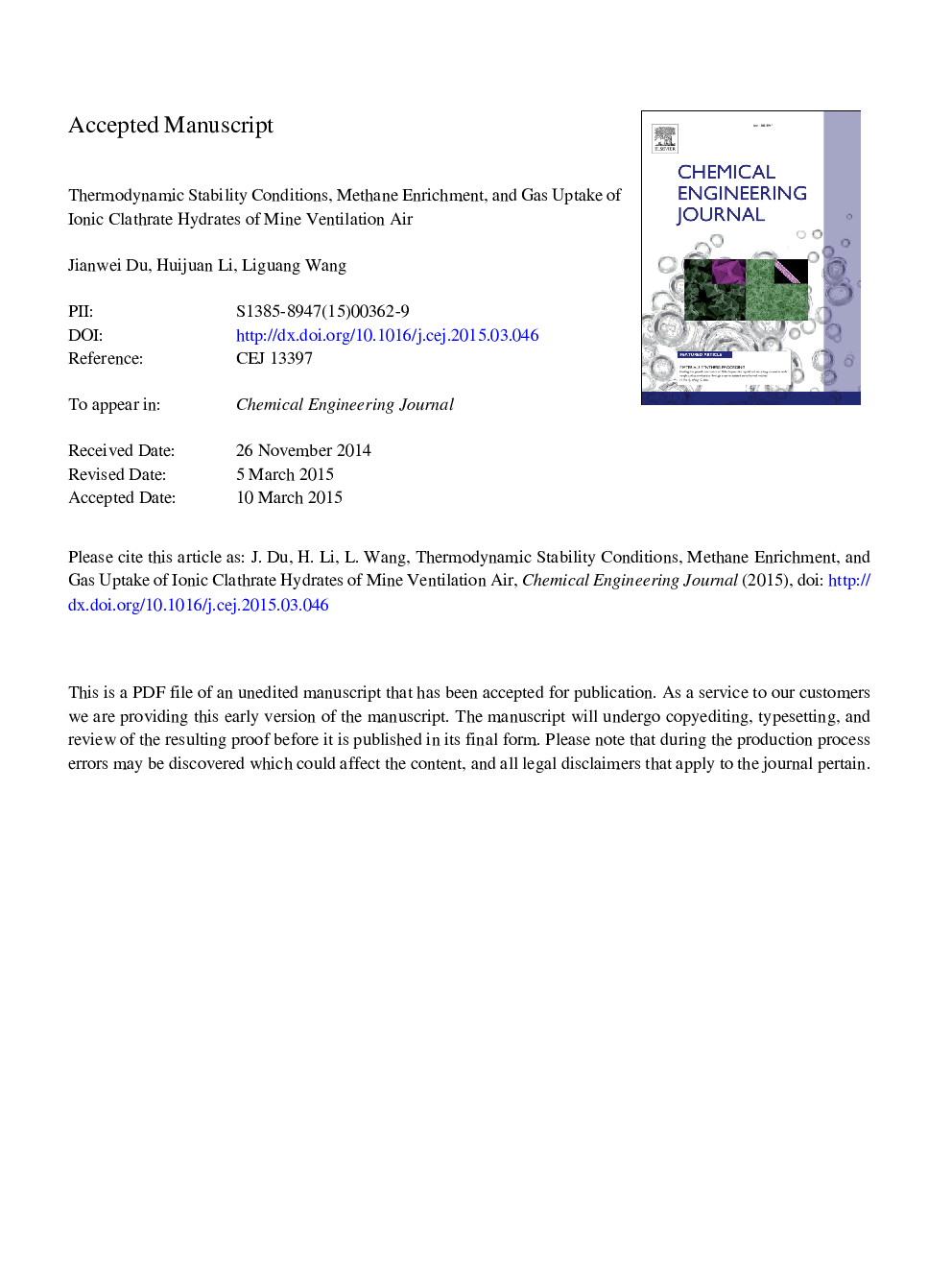| Article ID | Journal | Published Year | Pages | File Type |
|---|---|---|---|---|
| 6584717 | Chemical Engineering Journal | 2015 | 27 Pages |
Abstract
Abatement of methane from mine ventilation air (MVA) is a significant challenge faced by coal mining industry. A promising method for methane capture from gas mixture is clathrate hydrate formation. In search of suitable and cost-effective low-dosage promoters for hydrate-based methane capture processes, this paper reports the pressure requirement for the hydrate formation of simulated MVA (0.5Â vol% CH4Â +Â 99.5Â vol% air) and its potential for methane extraction, in the presence of tri-n-butyl phosphine oxide (TBPO) or tetra-n-butyl ammonium bromide (TBAB) at three different initial loadings (5Â wt%, 15Â wt%, and 26Â wt%). An isochoric equilibrium step-heating pressure search method was used to measure the hydrate phase equilibrium conditions at the temperature range of (277.61-295.54) K and pressure range of (0.23-19.11) MPa. It was found that at a given initial loading, TBPO was largely more effective than TBAB in reducing the pressure requirement for hydrate formation of MVA. At a given temperature, the equilibrium pressures of the clathrate hydrates were indifferent to the change in the initial loading of TBPO from 5Â wt% to 26Â wt%, in contrast to those of TBAB. Gas composition analysis by gas chromatography confirmed that CH4 could be significantly enriched in the ionic clathrate hydrates, and the highest methane enrichment ratio obtained in the present work was 300%, with TBPO at initial loading of 5Â wt%. At this relatively low loading, within a given period of 5Â h, TBPO also led to higher gas uptake compared with TBAB. The advantages of TBPO as a promoter of MVA hydrate were discussed.
Related Topics
Physical Sciences and Engineering
Chemical Engineering
Chemical Engineering (General)
Authors
Jianwei Du, Huijuan Li, Liguang Wang,
